Want to improve your baking skills instantly? Start using a kitchen scale! Learn how (and why) with this tutorial on How to Use a Baking Scale.

Want to save this recipe?
Enter your email & I'll send it to your inbox. Plus, get weekly updates from me!
One way to tell somebody you are a serious baker without telling somebody you are a serious baker is by using a kitchen scale to measure ingredients. I know there is widespread reliance on cup measurements in the US, but measuring by volume can (and often does) produce inconsistent bakes. This is because of variations in ingredient density and packing methods.
As a professional baker, I can't emphasize enough the importance of using weight measurements to get better baking results. It's my number one tip if you are making anything where precision matters. But I also recognize that learning to use a kitchen scale can be intimidating at first–I know, I had to make the leap, too!
But I'm here to help. This article will discuss the benefits of using a kitchen scale, which type of scale to buy, and, of course, how to use it!
Why You Should Be Using a Digital Scale
Using a kitchen scale is the most accurate way to measure ingredients, especially flour.
Even with identical conditions, two people using the same standard cup measuring technique to measure flour will often end up with significantly different amounts of flour per cup. You can try to get the correct amount whether you scoop and level off or sift and spoon it in, but there is just too much room for error.
You might be wondering: Why does this even matter? Well, simply put, it will mess up the recipe. If you scoop flour into a cup, the weight can be anywhere from 4 ounces to 6 ounces, and that is a wide range. Sometimes, recipes are so precise that an extra 2 ounces (which is almost ½ cup of flour) can make or break a recipe. But, if you measure 5 ounces of flour on a scale, it is always going to be 5 ounces, no matter what! This is especially important when making pie crust!
Beyond this, using a scale is helpful because:
It uses fewer dishes: When you measure ingredients directly into a bowl on a kitchen scale, you skip the need to wash various measuring spoons and cups.
It's less messy: Measuring ingredients directly into a bowl is also cleaner, eliminating the hassle of scraping sticky ingredients like honey, molasses, or olive oil out of a cup. Plus, it ensures that all of the ingredients actually end up in the recipe instead of being left behind in the measuring spoon or cup.
You can easily adjust recipe quantities: How challenging is it to adjust a recipe's quantity when the measurements involve odd fractions like 1-⅓ cups of flour? When you measure ingredients in ounces or grams, you can much more easily halve or double the quantity!
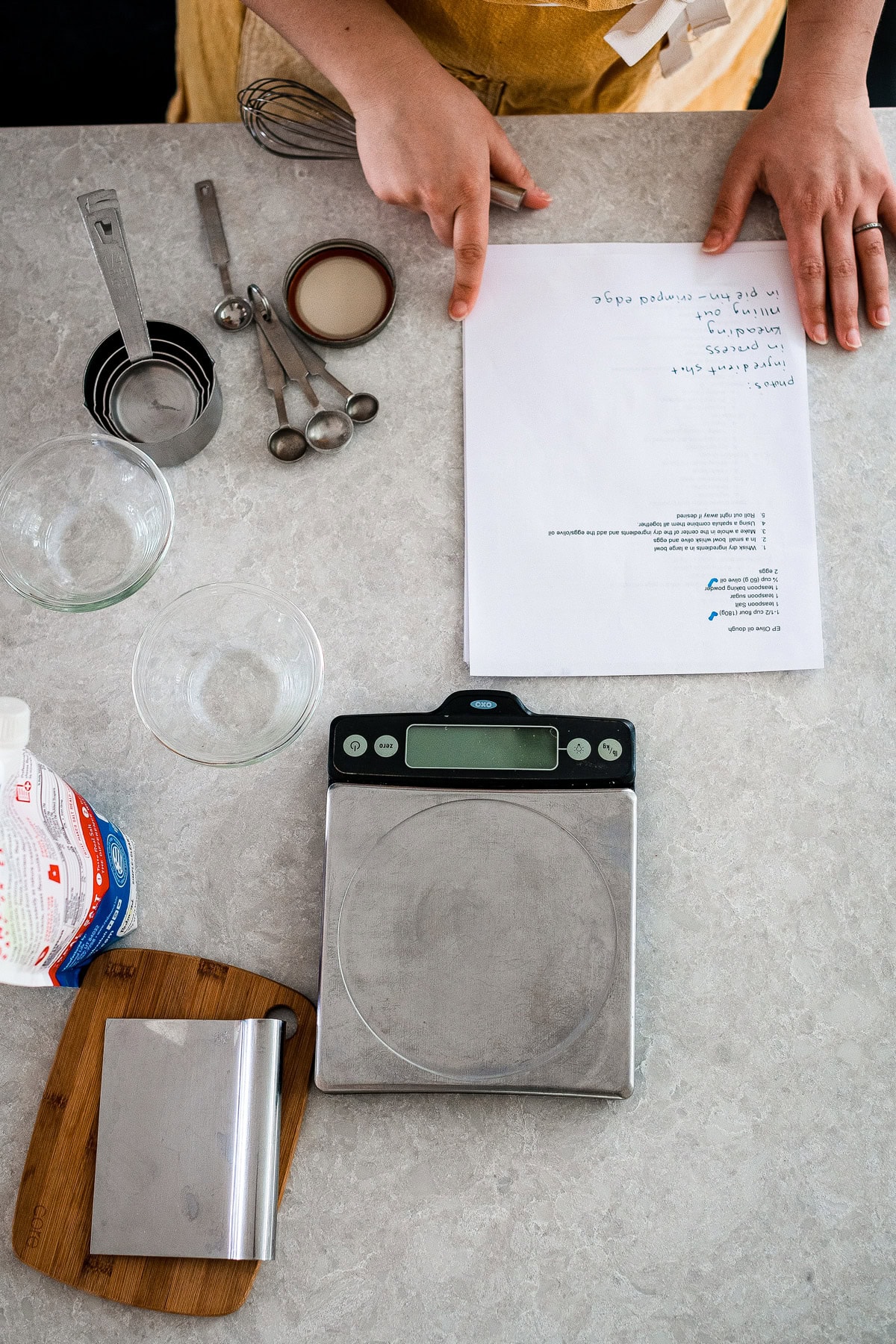
Grams, Cups, and Ounces–oh my!
When I first started using a kitchen scale, my biggest hang-up was understanding the various units of measurement it used and the difference between weight-based units and volumetric units. Growing up in the US, I wasn't familiar with the metric system. However, mastering the kitchen scale requires only a basic understanding of a few definitions and familiarizing yourself with the differences between a few key units of measurement. Here are the essential facts about the US imperial system of measurement and the metric system to get you started!
Cups: In the US, it's standard to use cup measurements of volume (or the physical amount of space a substance takes up) for both dry and liquid ingredients. This is likely the unit of measurement you are most familiar with in the kitchen. As stated above, the density and packing of ingredients can vary significantly, leading to potentially huge inconsistencies when measuring in cups. Measuring cups themselves can also vary a lot in size and shape, further compounding measurement variations.
Ounces and Pounds: Generally speaking, an ounce (oz) measures weight. However, this shouldn’t be confused with a fluid ounce (fl oz), which is used in the US imperial measurement system to measure the volume of liquids. unless a recipe specifically calls for fluid ounces, that ingredient can be measured on a scale in regular ounces. If you do come across a recipe calling for an ingredient measured in fluid ounces, it's best to measure that in a liquid measuring cup that’s marked with lines for fluid ounces. Many scales also have the ability to express a weight in pounds. One pound is equal to 16 ounces. So, once an ingredient surpasses 16 ounces in weight, the output may read as pounds. Some scales have the ability to switch between expressing weight in all ounces and/or a combination of pounds and ounces as well. So, 1 ½ pounds of flour might be expressed as 1.5 pounds, 1 pound and 8 ounces, or 24 ounces, depending on your scale’s setting, and you may be able to toggle between them to match how your recipe calls for the weight.
Milliliters: This measures the volume of liquids and is the metric version of a fluid ounce. You can measure milliliters (ml) by using a liquid measuring cup with measurements for ml. However, you can also use a scale to measure milliliters in grams, because in the metric system, there is a relationship between measuring the volume of liquids by milliliters and by weight in grams (see more about grams below). For example, 1 milliliter of water (and, therefore, most liquids with similar densities, like milk) weigh approximately 1 gram. You can feel confident that with the typical quantities of liquids that home bakers use, any small discrepancies between milliliters and grams won't affect the outcome of your recipe. Some scales also offer milliliters as an output to use when measuring.
Grams: The unit of measurement you will use the most often with a kitchen scale is likely grams! A gram (g) is a unit of mass in the metric system, which measures the amount of matter in an object. Using grams for both dry and liquid ingredients is the most straightforward, precise, and consistent method of measurement.
Which Type of Scale You Should Buy
Scales are not that expensive and last a long time, even with frequent use. I've worked with several brands and types of scales throughout my career. Some factors to consider when purchasing a scale are:
- For most average home bakers, a battery-operated digital scale is best, with a weight capacity of at least 10 pounds
- The scale should be able to switch easily between grams and ounces (and possibly between pounds and ounces as well)
- Choosing a reputable brand to ensure the scale is calibrated and accurate
- The ability to clean the scale (one with a removable plate is ideal)
- The size of the scale (it should be lightweight and compact for storing when not needed)
- A backlit readout is helpful for easily-read numbers
The scale I use at home is this OXO Good Grips digital scale with a pull-out display (so you can see the readout even if you use a large bowl on top of it). I've owned two versions over the last decade and highly recommend them, even though they aren't the cheapest options. I also have used Escali scales in professional settings. And another good version is to get a dual precision digital scale that can handle large and small quantities.
Digital Scale Recommendations
 Buy Now →
Buy Now → 
Dual Precision and Kitchen Food Scale
Buy Now → Buy Now →
Buy Now → How to Use a Digital Food Scale
Using a scale for measuring ingredients is a pretty straightforward process:
- Place your empty bowl on the scale and press "tare" or "zero" button. Or, simply place the bowl on the scale before it’s turned on, then press “on”. Before you measure, the scale should read out as "0".
- Add your ingredient until it reaches the number you would like. If your scale allows (and hopefully it does), you can switch between grams and ounces as needed.
- Before adding your next ingredient, press the "tare" or "zero" button! The scale will return to reading “0”, and you’ll be ready to add your next measurement.
If this all feels very foreign to you, I promise that before you know it, it will become second nature!
Here Is the Part Where a Little Math is Useful
The most common concern I hear from bakers who don't currently use a scale is that they aren't good at math and, therefore, can't use one.
The truth is, you really don't need a lot of math skills to be able to use a scale. In fact, you might find you have to deal with math less when using a recipe with weight measurements than with volume measurements. Instead of dealing with volume conversions between cups and spoons or adding or subtracting fractions, all you are doing is adding the ingredient to the scale until the desired weight is reached. However, this only works if your recipe includes weight measurements, of course. And there are two things to be said about this:
The first is that you should seek out recipes that in fact do include weight measurements, especially when it comes to dry ingredients like flour. If a baking recipe doesn't give that information, there is much more room for failure in replicating the recipe. The recipes I share are listed with cup measurements first, because I live in the US where this is the standard approach to providing a recipe, followed by weight measurements when important for precision. I almost always develop the recipes using weight (see this page on my editorial guidelines for more info), using a standard conversion technique (and my own personal conversion chart I've created over the years).
The second piece of advice I want to offer is that with time and repeated use of the scale, you'll start to become familiar with common weight conversions, and will be able to skip the use of cups and teaspoons and instead use the scale when desired. Over time, you'll learn that generally speaking, 1 cup of granulated sugar is 200 grams. Or that ½ cup of cream is 113 grams. Until then, you can use this Ingredient Weight Chart from King Arthur Baking Company as a resource.
Don't let a fear of math stop you from switching to a kitchen scale! Ultimately, you can use recipes that already offer gram or ounce measurements so that you can simply add ingredients to the scale without thinking about it.
Ingredient Exceptions
Measurements for some ingredients are easier to do without a scale, such as baking powder, baking soda, or salt. This is because the average kitchen food scale isn't quite as accurate when it comes to smaller quantities. Generally speaking, unless you have a precision scale (also known as a microgram scale or jewelers scale), a digital scale is not as accurate with weights of 5 grams or below. Because of this, it's often not worth converting ½ teaspoon of baking powder into a gram measurement. However, it is possible with the right scale.
I also find it easy to measure small amounts of liquids in a liquid measuring cup, as long as they aren't sticky (such as maple syrup or molasses). You might find there are some ingredients you prefer measuring by volume instead as well, and that's okay, aso long as you stick to measuring ingredients that can be impacted by the density of packing with a scale.
There is no doubt about it, if you want to bake like a pro, you need to use a kitchen scale. Using a kitchen scale for baking (and cooking) is more accurate, faster, cleaner, and leads to better baking results. Scales are not a big investment but will fundamentally change your bakes and your baking routine for the better.
More Kitchen Tutorials
Some of the links on this page may be affiliate links. Everyday Pie is a participant in the Amazon Associates Program. As an Amazon Associate I earn from qualifying purchases, at no extra cost to you.
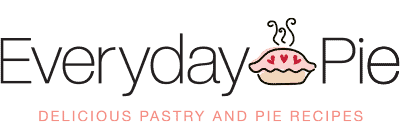

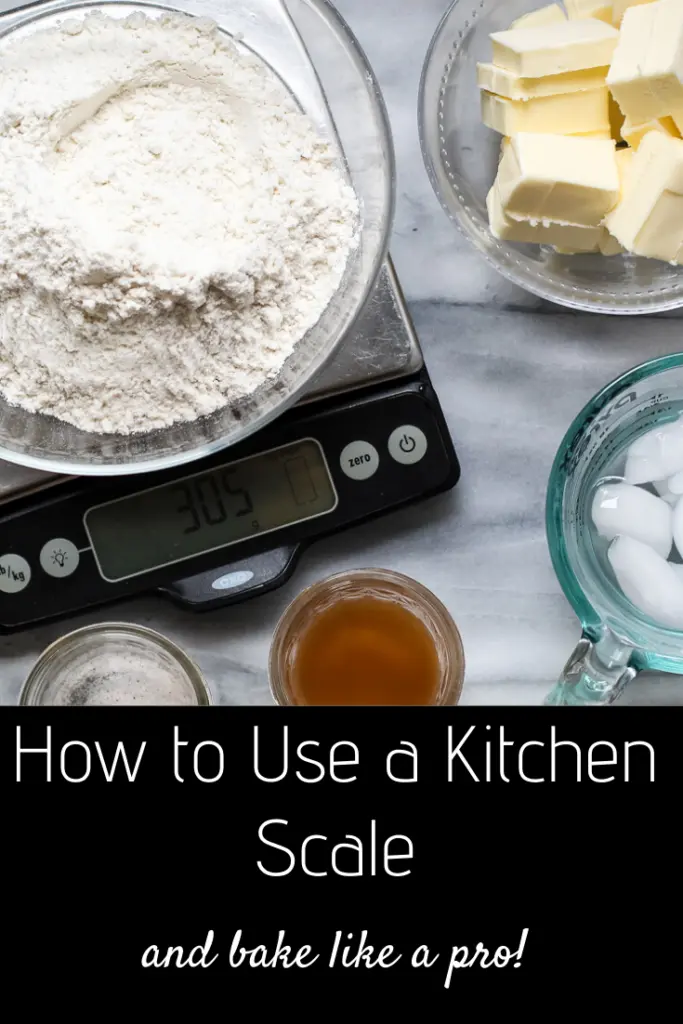

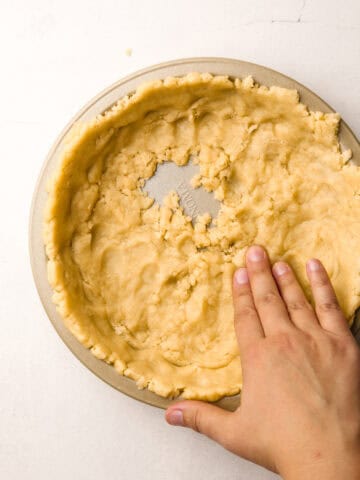
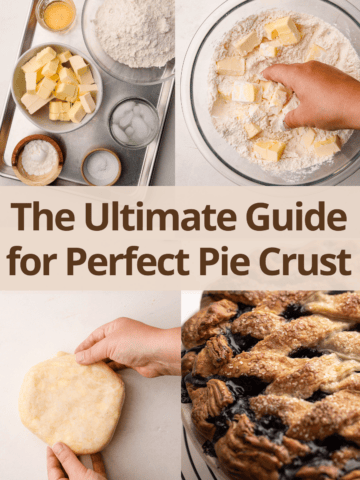
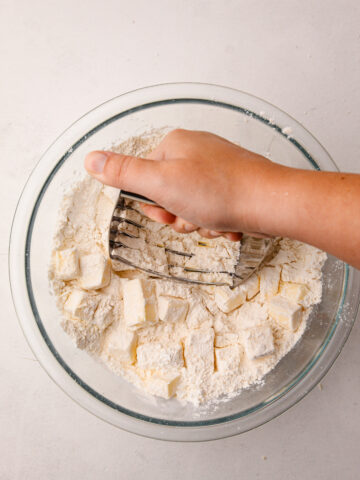
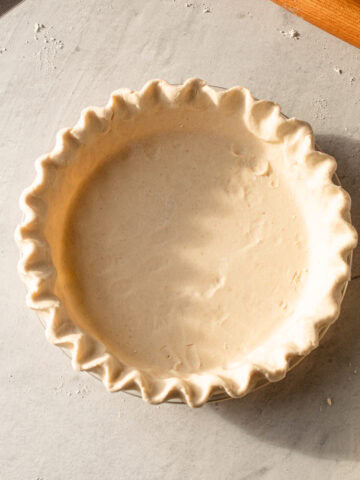
sreekanth devireddy
hey such a nice guide